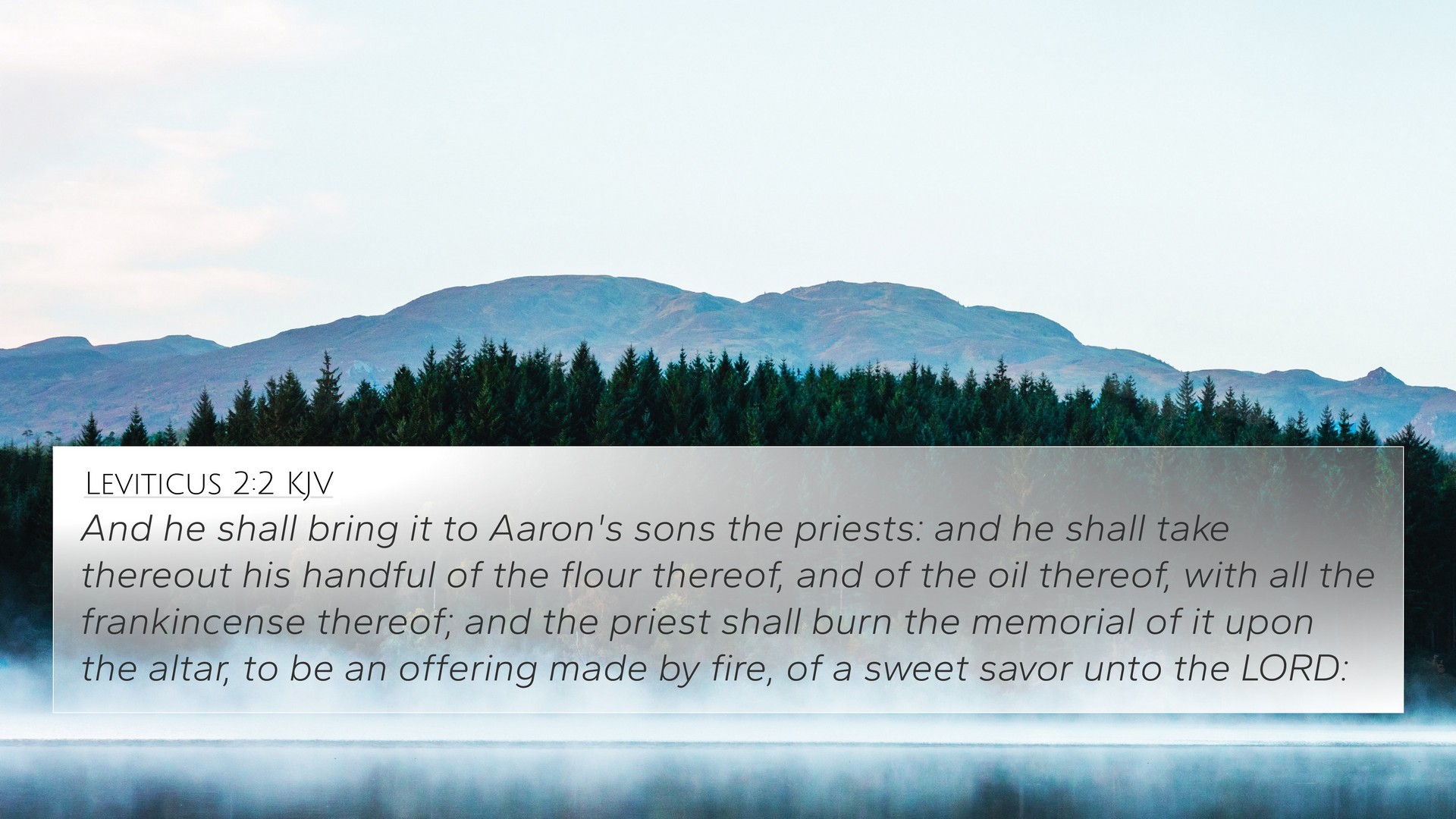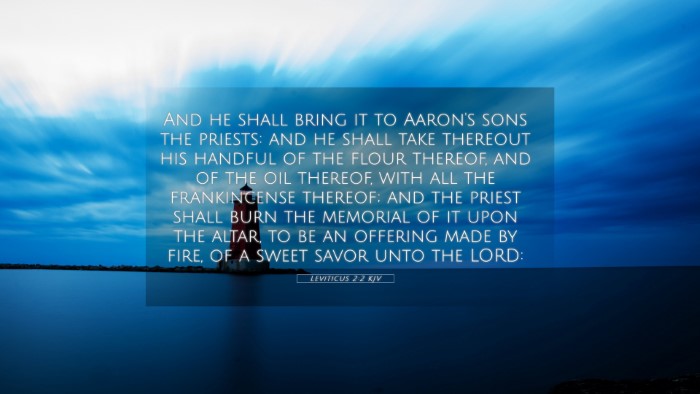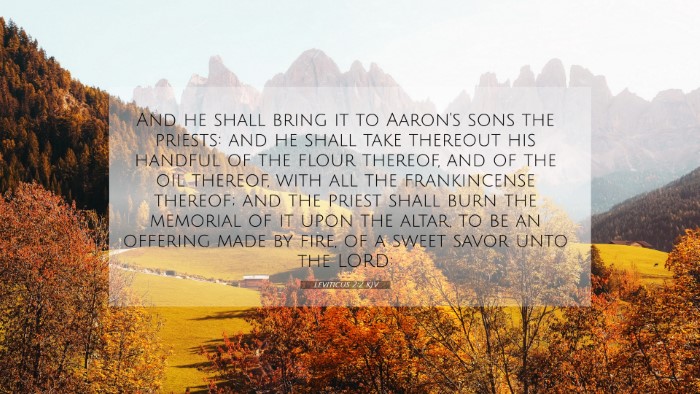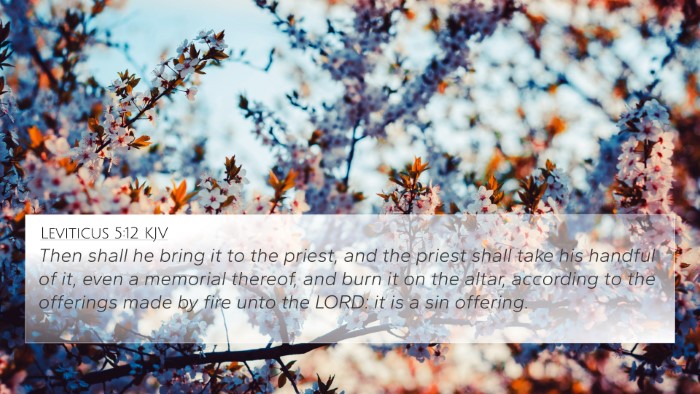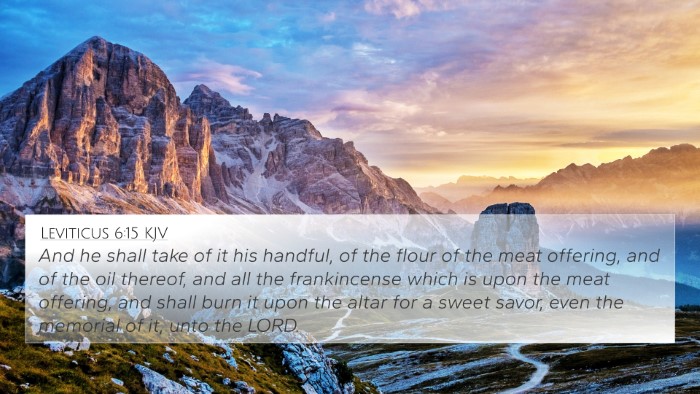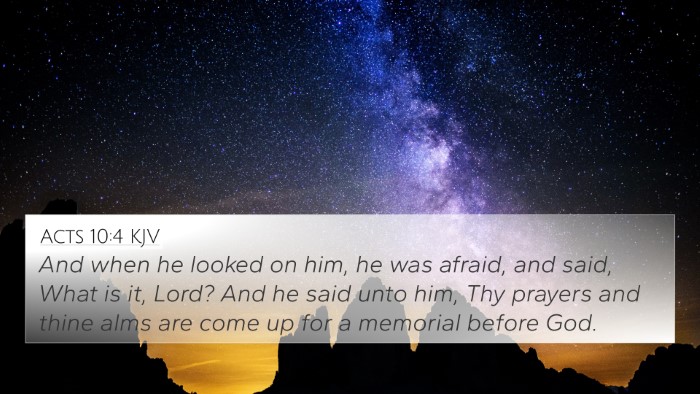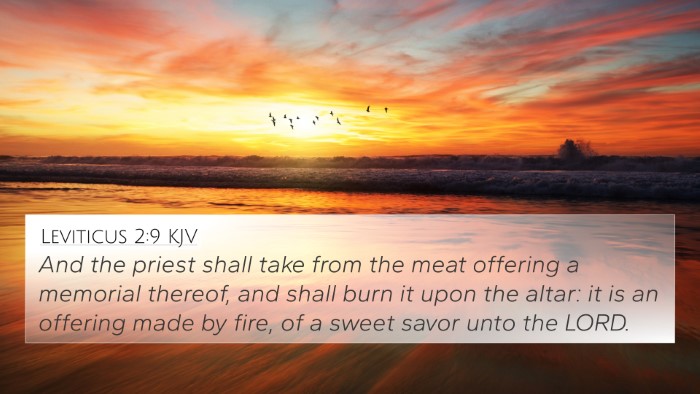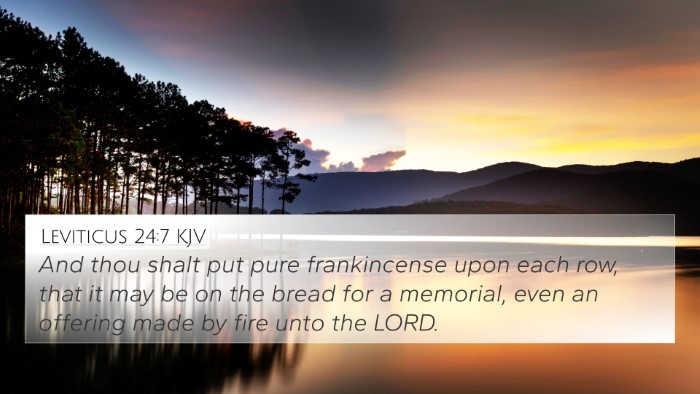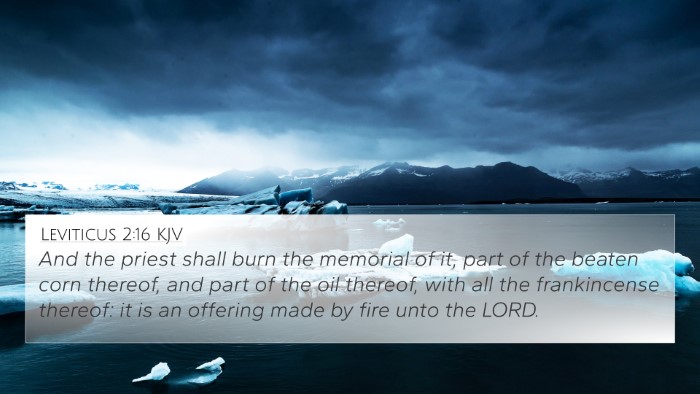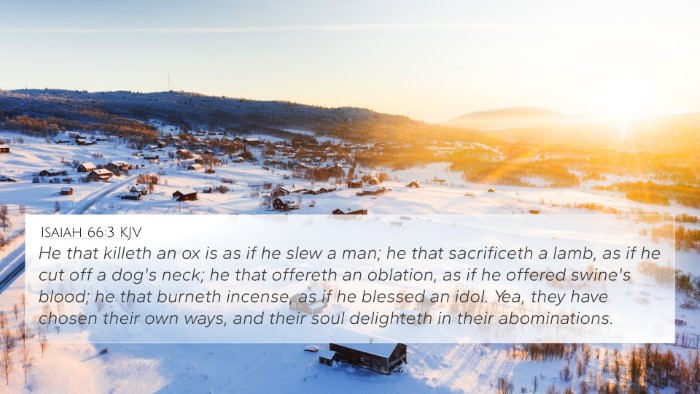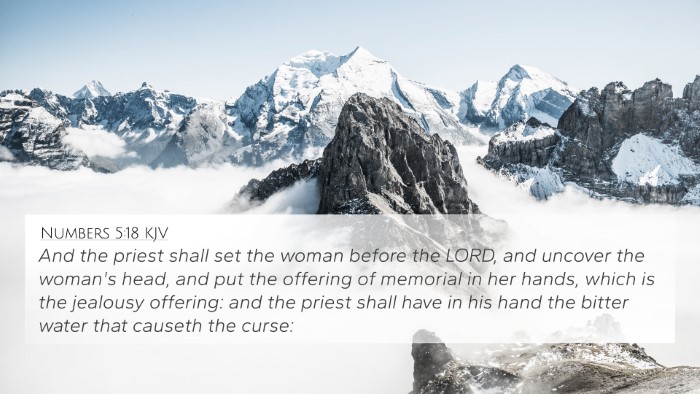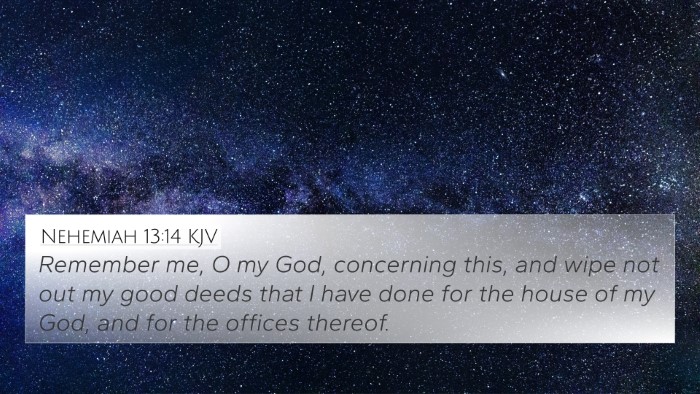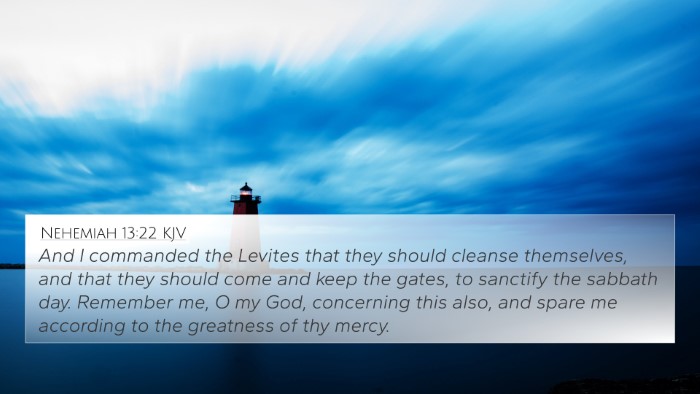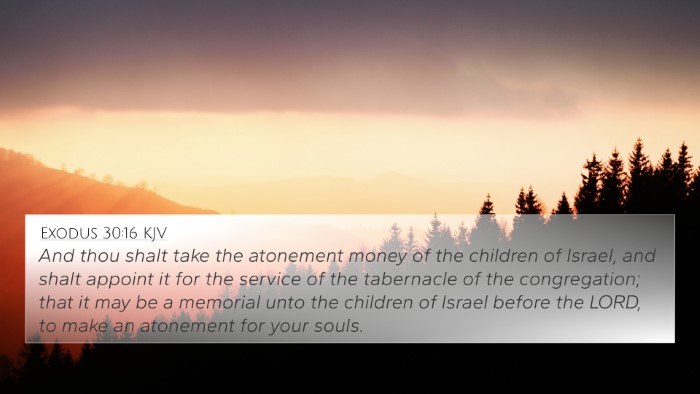Understanding Leviticus 2:2
Leviticus 2:2 states: "And he shall bring it to Aaron’s sons the priests: and he shall take thereout his handful of the flour, and of the oil thereof, and all the frankincense thereof; and the priest shall burn the memorial of it upon the altar, to be an offering made by fire, of a sweet savour unto the Lord." This verse is part of the instructions for grain offerings, outlining the procedure for presenting offerings to God.
Summary of Key Insights
The significance of Leviticus 2:2 can be understood through the following lenses:
- Offerings to God: This verse emphasizes the importance of bringing offerings to the Lord as acts of worship and devotion.
- The Role of the Priests: Aaron's sons, acting as mediators, highlight the priestly role in facilitating the connection between God and the worshipper.
- Sacrificial Symbols: The flour, oil, and frankincense represent the pure and costly nature of what is offered to God, symbolizing the worshipper's sincerity and devotion.
- Memorial Offering: The phrase "memorial of it" indicates that the offerings serve as a reminder of the worshipper's commitment to God.
- Sweet Aroma: The "sweet savour" indicates God's pleasure in the offering, which reinforces the relational aspect of worship.
Cross-References and Thematic Connections
To deepen the understanding of this verse, it is essential to explore its connections to other scriptures. Here are several related Bible verses:
- Exodus 29:18: Discusses how the whole ram is burnt on the altar, signifying total dedication to God.
- Leviticus 1:9: Relates to the burnt offering and its pleasing aroma, showcasing the similar themes of sacrifice and offering.
- Genesis 8:21: God smelled the sweet aroma of Noah's offerings, indicating His acceptance of sacrifices.
- Hebrews 13:15: Encourages Christians to offer sacrifices of praise, linking Old Testament practices with New Testament faith.
- Philippians 4:18: Paul refers to the gifts sent to him as a sweet-smelling aroma, indicating their sacrificial nature.
- Matthew 5:23-24: Urges reconciliatory actions before offering gifts, drawing parallels with the intent behind offerings.
- Romans 12:1: Paul instructs believers to present their bodies as living sacrifices, creating a connection between Old and New Testament offerings.
Interpreting the Verse
When interpreting Leviticus 2:2, several methodological approaches are beneficial:
- Comparative Analysis: Examine how the principles of offerings have evolved throughout the Bible, focusing on both the Old and New Testaments.
- Thematic Exploration: Explore themes of sacrifice, thanksgiving, and worship within the broader biblical narrative.
- Contextual Study: Understand the cultural and historical context of sacrificial laws in ancient Israel to appreciate their significance.
Tools for Bible Cross-Referencing
For those studying biblical texts, utilizing tools for cross-referencing can enhance understanding:
- Bible Concordances: Useful for finding related verses and understanding thematic connections.
- Bible Cross-Reference Guides: Offer structured means to explore how verses correlate across different books.
- Cross-Reference Bible Studies: Methods that allow deeper exploration of biblical themes and connections.
Conclusion
Leviticus 2:2 serves as a gateway to understanding both the nature of offerings in the Old Testament and their fulfillment in New Testament teachings. By exploring cross-references and employing various study methods, one can gain profound insights into the significance of this scripture. Engaging with the Bible through these connections enriches the understanding of God's covenant with His people, as well as the continuing importance of worship and sacrifice in the believer's life.
